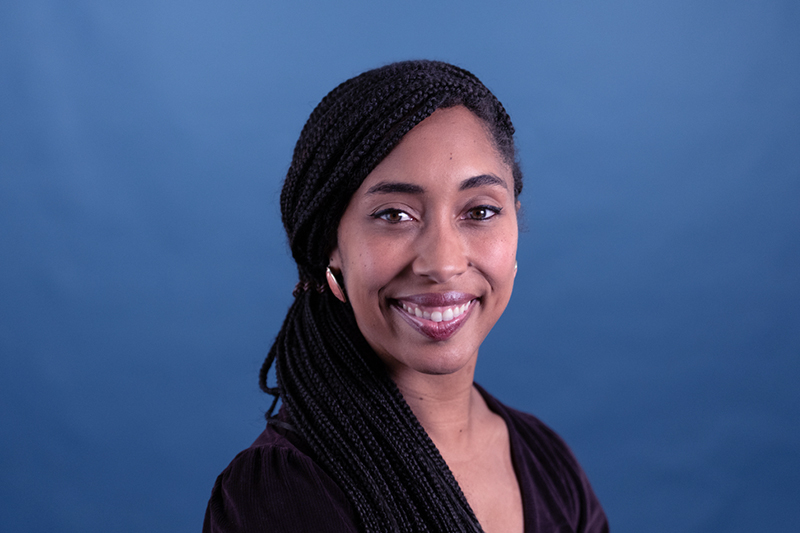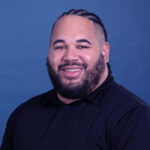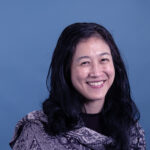Unraveling the secret to attention, one brain cell at a time: Brielle Ferguson, PhD

In college, Dr. Brielle Ferguson was initially drawn to psychology. Witnessing the impact of schizophrenia on a family member, she was surprised how little was known about the condition. She majored in cognitive science, but she wanted to go deeper and understand what happens in the brain. Taking a required course in neuroscience, she thought, “this is the coolest thing I’ve ever seen.”
Today, Dr. Ferguson’s research is still informed by her personal interest in psychology. A neuroscientist on the Forbes 30 under 30 list, she recently opened her own lab at Boston Children’s Hospital. She wants to open a path to better treatments for psychiatric disorders, especially those like schizophrenia that cause cognitive dysfunction. “We’re not great at treating cognitive deficits currently,” she says.
Understanding attention through inhibition
“Attention is one of the fundamental building blocks of many of our more complex behaviors,” she explains. “There is so much we still don’t know.”
Attention cuts across many neurodevelopmental, neurological, and psychiatric disorders, including attention-deficit/hyperactivity disorder (ADHD), autism spectrum disorder, epilepsy, and schizophrenia. Dr. Ferguson hopes her research will aid in developing therapies to improve attention and overall functioning in people with these disorders.
The brain controls what we do, think, and feel through a complex network of cells. Dr. Ferguson, affiliated with both the Genetics and Neurology departments at Boston Children’s, intends to unravel these workings one cell type at a time. Her focus is on how neurons control basic elements of cognition, starting with attention.
“In disorders like epilepsy, cognitive symptoms understandably don’t get as much focus, because the seizures can be so debilitating,” she explains. “But for people who are lucky enough to respond well to anti-seizure medications, attention and other cognitive symptoms are often the largest predictor of their functional outcome.”
She thinks the answer to understanding attention might lie in inhibitory neurons, which block other brain cells from communicating, and in how chemicals in the brain interact with these neurons. Dysfunction in inhibitory neurons is often the cause of seizures in people with epilepsy, causing cells to send too many signals too quickly and the brain to become overloaded.
Dr. Ferguson thinks that studying inhibitory neurons may help explain why many people with epilepsy also have autism. Perhaps the way brains are mis-wired for attention is similar in the two conditions. “We’re just starting to understand overlapping circuits in epilepsy and autism,” she says. “Inhibitory neurons are a convergence point.”
Mapping attention in the brain
In the lab, Dr. Ferguson focuses on the prefrontal cortex, a part of the brain important for attention. “I’m mapping cell types and circuits in the brain that support attention and trying to identify signatures of attention or inattention,” she says.
Her models also enable her to identify common chemicals or cell types involved in attention across different cognitive disorders. That way, she can work to develop therapies to address attention issues, regardless of a person’s specific diagnosis.
In addition to her laboratory research, Dr. Ferguson is partnering with physicians at Boston Children’s to study children with electroencephalograms (EEGs) to see how their brain electrical activity changes depending on whether they pay attention. She hopes combining these observations with her models of brain cells and circuits will accelerate the discovery of new interventions.
Supporting Black neuroscientists
Someday, Dr. Ferguson hopes to go back to studying schizophrenia. Meanwhile, outside the lab, she pursues another passion: increasing the visibility of Black neuroscientists. In 2020, in the wake of the murders of Ahmaud Arbery, Breonna Taylor, and George Floyd, she helped found Black in Neuro, an organization committed to diversifying neuroscience, supporting Black scholars, and building community.
Now, she directs programming for the nonprofit, and last fall, helped host the largest in-person meetup of Black in Neuro members — about 200 people — at the Society for Neuroscience conference.
“Over the last few years, working with Black In Neuro has brought me so much joy,” she says. “I can’t wait to see what we do next.”
Read more profiles of Boston Children’s researchers.
Related Posts :
-

A global take on rare disease research: Maya Chopra, MBBS, FRACP
Several years ago, while working as a clinical geneticist at the Imagine Institute of Genetic Diseases in Paris, Dr. Maya ...
-

Perfecting the craft of modeling disease in stem cells: Dosh Whye
Part of an ongoing series profiling researchers at Boston Children’s Hospital. Dosh Whye has always wanted to make peoples’ ...
-

Advancing mother-child health globally: Grace Chan MD, MPH, PhD
First in an ongoing series profiling researchers at Boston Children's Hospital. Globally, five million children die annually before the age ...
-

Taming vaccine data: Joann Arce, PhD
Part of an ongoing series profiling researchers at Boston Children’s Hospital. Joann Arce, PhD, is a data tamer — corralling ...





